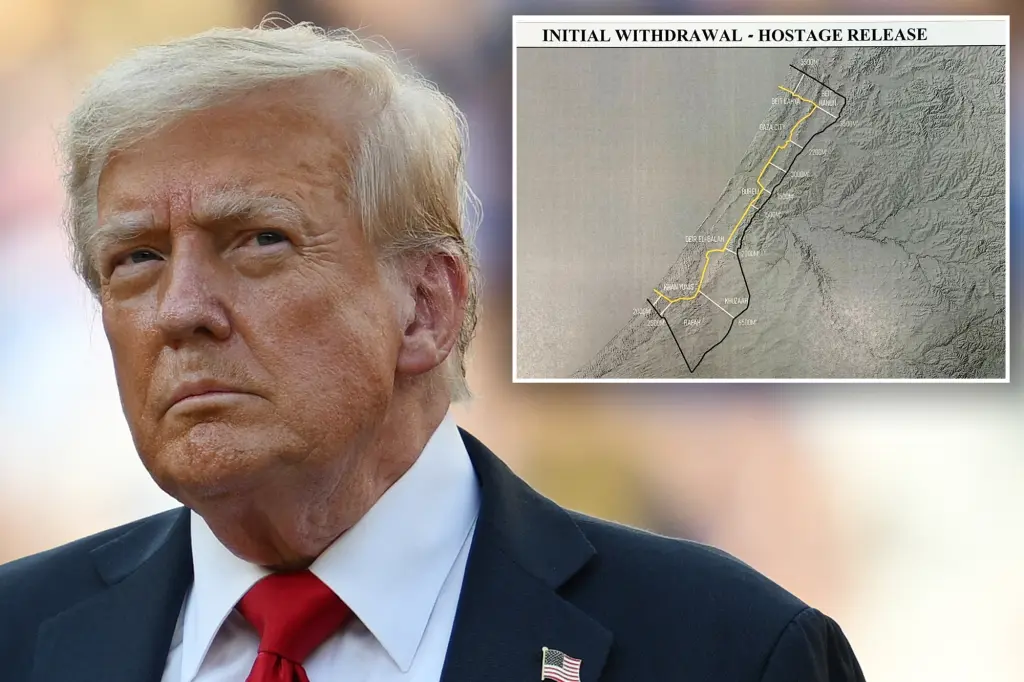Trump Announces Potential Breakthrough in Gaza Conflict
In a significant development in the ongoing Middle East conflict, former President Donald Trump announced on Saturday that Israel has agreed to an “initial withdrawal line” in Gaza, potentially paving the way for a cease-fire and hostage exchange. This announcement represents what could be a pivotal moment in the devastating conflict that has raged for months, with Trump characterizing the potential agreement as marking “the end of this 3,000-year catastrophe.” The statement, shared on Trump’s Truth Social platform, suggests that negotiations have reached a critical juncture, with the ball now in Hamas’ court to confirm acceptance of the terms. While details remain limited, this development indicates that intense behind-the-scenes diplomatic efforts may finally be yielding results in a conflict that has claimed thousands of lives and created a humanitarian crisis in Gaza.
Israeli Prime Minister Benjamin Netanyahu followed Trump’s announcement with his own statement, revealing that he has ordered his negotiation team, led by Strategic Affairs Minister Ron Dermer, to travel to Egypt to finalize the technical details of the hostage release. This practical step demonstrates Israel’s commitment to moving forward with the agreement, though Netanyahu emphasized his intention to limit negotiations to “just a few days,” indicating a desire to avoid prolonged discussions that might delay implementation. “We will not tolerate stalling tactics or evasions,” Netanyahu stated, echoing Trump’s apparent frustration with the pace of previous negotiation attempts. The urgency in both leaders’ statements reflects the critical nature of the moment and suggests a coordinated approach to pressuring Hamas to accept the terms that have been presented.
According to Netanyahu’s outline, the proposed agreement would unfold in two distinct phases. The initial phase would involve Hamas releasing hostages while Israeli troops reposition themselves within Gaza. Importantly, Israel would maintain control of what Netanyahu described as “dominant areas deep inside the strip,” indicating that this would not represent a complete military withdrawal. This nuanced approach appears designed to balance humanitarian concerns with Israel’s stated security objectives, potentially offering a compromise position that could appeal to both domestic and international audiences concerned about different aspects of the conflict. The inclusion of a hostage release as a priority element of the first phase addresses one of the most emotionally charged aspects of the conflict that has galvanized Israeli public opinion.
The second phase of the agreement, as outlined by Netanyahu, would involve the disarmament of Hamas and the demilitarization of Gaza—goals to be achieved either through diplomatic means or by force if necessary. This dual-track approach reflects Israel’s long-stated objective of eliminating Hamas as a military threat while acknowledging international pressure for a negotiated resolution. Netanyahu’s inclusion of the military option suggests that Israel views this agreement not as a capitulation but as part of a broader strategy to achieve its security objectives. The prime minister credited the coordination with Trump for isolating Hamas diplomatically, while also claiming that Israeli military pressure had been instrumental in bringing the group to the negotiating table—a framing that allows him to present the potential agreement as a result of strength rather than compromise.
The timing of this announcement raises questions about its relationship to broader regional and international dynamics. Coming amid escalating tensions throughout the Middle East and during a U.S. presidential campaign in which foreign policy has emerged as a significant issue, the announcement has multiple potential audiences and implications. Trump’s central role in announcing the development—rather than current administration officials—is particularly notable and suggests complex political calculations at play. For Israeli leaders, the agreement potentially offers a path to addressing domestic pressure over the hostage situation while maintaining security objectives; for Hamas, any agreement would need to address humanitarian concerns in Gaza while allowing the group to claim some form of political victory.
As the world awaits Hamas’ response and the outcome of the Egyptian negotiations, the humanitarian situation in Gaza remains dire, with civilians continuing to bear the brunt of the conflict. The announced framework, while potentially representing progress, leaves many questions unanswered about long-term governance in Gaza, the role of the Palestinian Authority, and how regional powers will engage in reconstruction and stabilization efforts. The involvement of Egypt as a mediating force highlights the regional dimensions of the conflict and the important role neighboring states play in facilitating dialogue. Whether this moment represents a genuine turning point or another false dawn in the long-running conflict depends not only on the immediate acceptance of terms but also on the sustained commitment of all parties to implementation and the broader international community’s willingness to support the difficult work of rebuilding and reconciliation that would need to follow any ceasefire agreement.


